 #145 |  #146 |  #147 |  #148 |  #149 |
 #150 |  #151 | 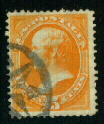 #152 |  #153 |  #154 |
 #155 |
Ungrilled National Bank Note Company issue.
 #156 |  #157 |  #158 |  #159 |  #160 |
 #161 | 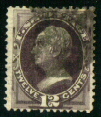 #162 | 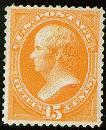 #163 |  #165 | 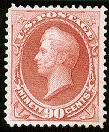 #166 |
When the Continental Bank Note Company began to issue the stamps, they marked the stamps from 1 to 15 cents with a "secret mark," to identify that they were made by Continental. Secret mark designs were also made for the higher denomination stamps, but these were never put into circulation, and it is believed that no plates were ever made for them.
 #178 |  #179 |
In 1875, the Continental Bank Note Company issued their two cent stamp on a yellowish paper. They also released a new design, a five cent Taylor stamp which was not part of the "busts" series; it was issued alone.
In 1875, many series were reprinted, to be presented as souvenirs of the 1876 Centennial Exposition. These stamps are dealt with separately on another page. All of them are very rare.
 #182 |  #183 | 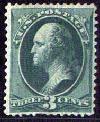 #184 |  #185 |  #186 |
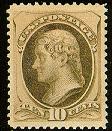 #187 |  #188 |  #189 |  #190 | 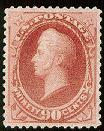 #191 |
The Continental Bank Note Company and the American Bank Note Company were consolidated in 1879. From that time on, the American Bank Note Company began using the old Continental plates to print stamps. Some of these bear the secret marks, and some do not.
 #205 |
In honor of President Garfield, an all-new design was issued in April of 1882, printed by the American Bank Note Company.
 #206 |  #207 |  #208 |  #209 |
Several of the earlier designs were re-engraved and reissued in 1881.
 #210 | 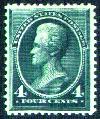 #211 |
To meet the new (lower) first class rate of two cents, and the "double" rate, two new stamps were issued in October of 1883. These designs featured busts of Washington and Jackson.
 #212 |  #213 |  #214 |
A new penny Franklin, plus two new old designs with new colors. Issued in Summer and Fall of 1887. See also the stamps below.
 #215 | 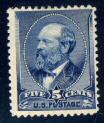 #216 |  #217 |  #218 |
In 1888, a few of the earlier designs were reissued with different colors.
 #219 |  #219D |  #220 |  #221 |  #222 |
 #223 |  #224 |  #225 |  #226 |  #227 |
 #228 |  #229 |
A new series of "bust" designs was issued by the American Bank Note Company in 1887. this time, all of the frames were of a similar design, and still more famous Americans appeared on US stamps for the first time.
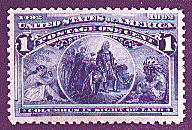 #230 | 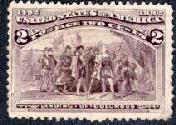 #231 | 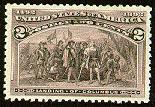 #231c | 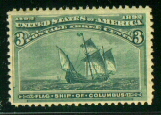 #232 |
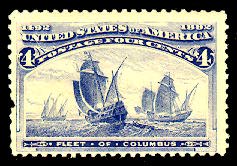 #233 | 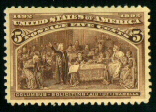 #234 | 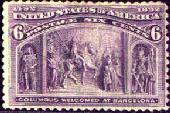 #235 | 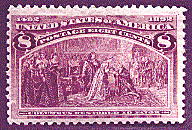 #236 |
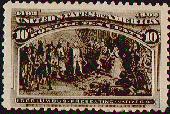 #237 | 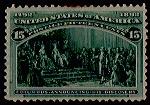 #238 |  #239 |  #240 |
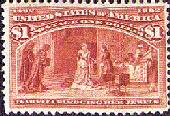 #241 | 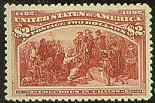 #242 | 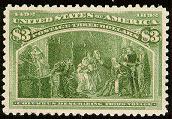 #243 | 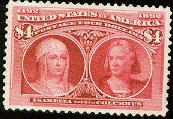 #244 |
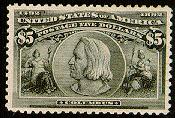 #245 |
The Columbian Exposition issue, coinciding with the 400th anniversary of his discovery of the American continents, was the first US commemorative issue. For the first time also, there were stamps with values of $1.00 and higher. The higher denomination stamps, seldom used then, are all valuable today.
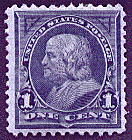 #246 |  #247 | 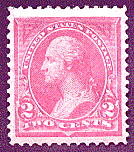 #248 | 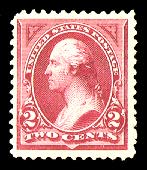 #249 | 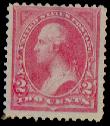 #250 |
 #251 |  #252 |  #253 | 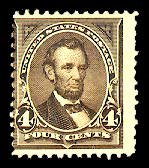 #254 | 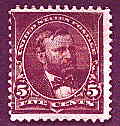 #255 |
 #256 | 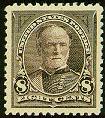 #257 | 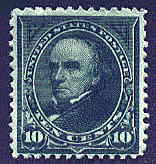 #258 | 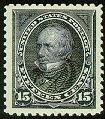 #259 | 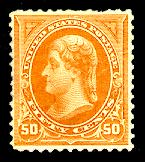 #260 |
 #261 |  #261A |  #262 | 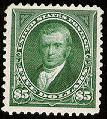 #263 |
These stamps begin the so-called "Bureau Issues," because they were printed by the Bureau of Engraving and Printing. This first Bureau issued featured more Americans' heads.
 #264 |  #265 |  #266 |  #267 |  #268 |
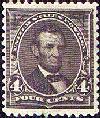 #269 | 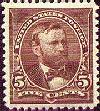 #270 |  #271 | 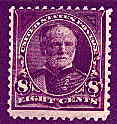 #272 |  #273 |
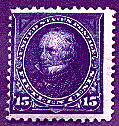 #274 |  #275 |  #276 |  #276A | 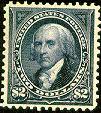 #277 |
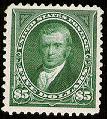 #278 |
Same as the above, but watermarked.
 #279 | 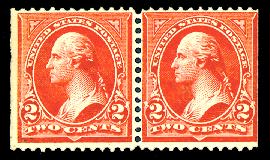 #279B |  #280 | 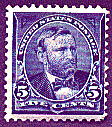 #281 | 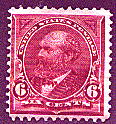 #282 |
 #282C | 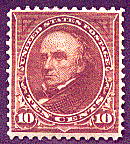 #283 | 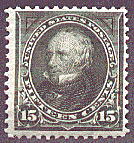 #284 |
Same as the above, with a different watermark.
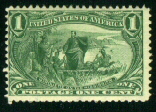 #285 | 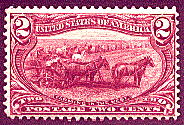 #286 | 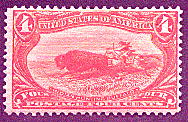 #287 | 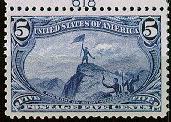 #288 |
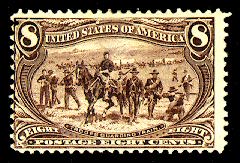 #289 | 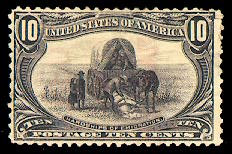 #290 | 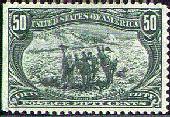 #291 | 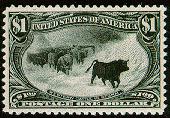 #292 |
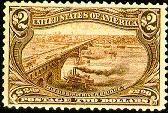 #293 |
A second US commemorative series, issued on account of the Trans-Mississippi Exposition in Omaha, Nebraska, was released in 1898. Various sources were selected for the designs. The ten cent design was chosen from an A.G. Heaton painting, "Hardships of Emigration." The original painting was water damaged and destroyed shortly thereafter. The $1 design, thought to be called "Western Cattle in Storm," is actually a painting of Scottish cattle, called "The Vanguard."
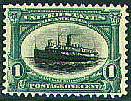 #294 | 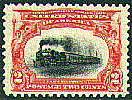 #295 | 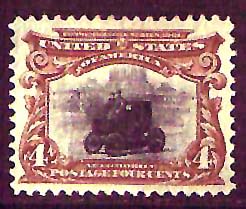 #296 | 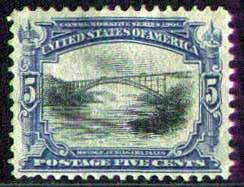 #297 | 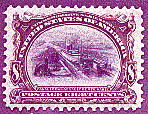 #298 |
 #299 |
In 1901, in Buffalo, New York, the Pan-American Exhibition was held. In commemoration, the US Postal Service made special stamps available from May through October of that year. A few of the designs had a sheet or two misprinted with the center inverted, and an interesting story exists about one collector purchasing the only inverted sheet of the two cent design in 1901 and selling the stamps all-too-cheaply.